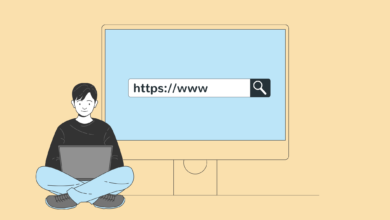The Hidden Dangers of Poor Website Indexing and How to Avoid Them

While many website owners focus on creating great content and building backlinks, the importance of proper indexing is often overlooked. Poor indexing can lead to several issues that can negatively impact your site’s performance and visibility. In this post, we’ll examine some of these hidden dangers and discuss how to mitigate them effectively.
1. Duplicate Content Issues
When search engines encounter multiple versions of the same content, they may struggle to determine which version to index and rank. This can dilute your site’s authority and harm your search engine rankings. Duplicate content can arise from various sources:
– URL variations (e.g., www vs. non-www, HTTP vs. HTTPS)
– Printer-friendly versions of pages
– Session IDs in URLs
– Similar product descriptions on e-commerce sites
Using [indexd’s duplicate content checker](https://indexd.io) can help you identify and resolve these issues before they become problematic. Once identified, you can use canonical tags, 301 redirects, or parameter handling to guide search engines to the preferred version of your content.
2. Crawl Budget Waste
Search engines allocate a certain amount of time and resources (crawl budget) to crawl your site. If this budget is wasted on low-value or redundant pages, your important content may not get indexed promptly. This can be particularly problematic for large websites or those with complex structures.
Factors that can waste crawl budget include:
– Excessive pagination
– Faceted navigation on e-commerce sites
– Low-quality or thin content pages
– Duplicate content
Optimizing your site structure and using [indexd’s crawl optimization tools](https://indexd.io) can help ensure that search engines focus on your most valuable pages. This might involve consolidating thin content, improving your site’s architecture, or using robots.txt to guide crawlers away from less important areas of your site.
3. Outdated or Broken Links
Outdated or broken links can lead to indexing errors and poor user experience. When search engines encounter too many broken links, they may perceive your site as low-quality or poorly maintained, potentially impacting your rankings.
Regularly auditing your site for broken links and updating them is crucial. [indexd’s link checker](https://indexd.io) can automate this process, helping you maintain a healthy site structure and improve indexing efficiency.
4. Incorrect Use of Noindex Tags
While noindex tags can be useful for preventing certain pages from appearing in search results, their incorrect use can lead to serious indexing problems. If important pages are accidentally tagged with noindex, they’ll be excluded from search results, potentially causing a significant drop in organic traffic.
Regularly review your use of noindex tags and ensure they’re only applied to pages that genuinely shouldn’t appear in search results.
5. Slow Page Load Times
As mentioned in the previous post, slow page load times can negatively impact indexing. But the dangers go beyond just slower crawling. Extremely slow pages might be abandoned by crawlers before they’re fully indexed, leading to incomplete or inaccurate representations of your content in search indexes.
Moreover, slow load times can increase bounce rates, which may indirectly signal to search engines that your content is not valuable, potentially leading to lower rankings or less frequent crawling.
6. XML Sitemap Issues
While XML sitemaps are crucial for good indexing, poorly constructed sitemaps can cause problems. Issues like including non-canonical URLs, blocked pages, or pages with noindex tags in your sitemap can confuse search engines and waste crawl budget.
Regularly update and optimize your XML sitemap, ensuring it only includes the pages you want indexed. Tools like indexd can help you generate and maintain accurate sitemaps.
7. Over-Optimization of Internal Linking
While internal linking is important for indexing and SEO, over-optimizing can backfire. Creating too many internal links, especially with exact-match anchor text, can appear manipulative to search engines and potentially trigger penalties.
Strike a balance with your internal linking strategy, focusing on creating a natural, user-friendly site structure rather than trying to game the system.
8. Neglecting Mobile Optimization
With Google’s mobile-first indexing, neglecting mobile optimization can severely impact your site’s indexing and ranking. If your mobile version has less content than your desktop version, or if it’s structured differently, you may see a decrease in traffic as Google primarily uses the mobile version for indexing and ranking.
Ensure your site is fully optimized for mobile devices, with responsive design and equivalent content across mobile and desktop versions.
By addressing these potential pitfalls and leveraging tools like indexd, you can ensure that your website is properly indexed, improving its visibility and performance in search engine results. Remember, good indexing practices are not just about getting your pages into search engine indexes—they’re about ensuring your most valuable content is easily discoverable by both search engines and users.
Regular audits of your site’s indexing status, coupled with proactive optimization efforts, can help you stay ahead of these hidden dangers and maintain a strong, visible online presence.

